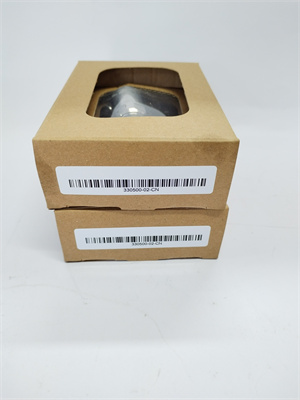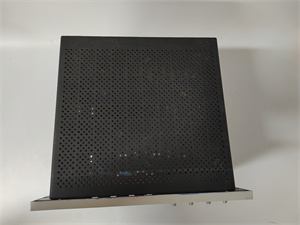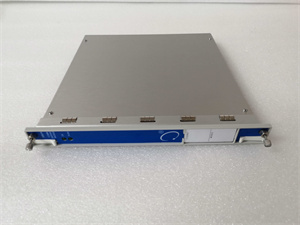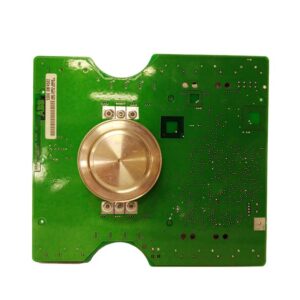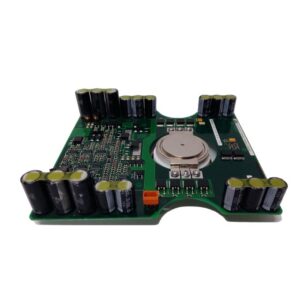Description
1. Product overview
The BENTLY 330500-02-CN is a high-performance velocity sensor, a significant part of BENTLY NEVADA’s machinery monitoring product portfolio. It is designed to measure the vibration velocity of machinery casings, providing critical data for assessing the operational health of rotating equipment. In industries where the reliable operation of machinery is paramount, such as power generation, chemical processing, and mining, this sensor plays a vital role. By capturing the vibration velocity of components like motor housings, pump casings, and turbine enclosures, it helps identify issues such as bearing degradation, misalignment, and unbalance at an early stage. This early detection enables proactive maintenance, reducing the risk of unexpected equipment failures and minimizing production downtime.
2. Parameter list
| Parameter name | Parameter value |
| Product model | 330500-02-CN |
| Manufacturer | BENTLY NEVADA |
| Product category | Velocity sensor for machinery vibration monitoring |
| Sensor type | Piezoelectric velocity sensor, utilizing piezoelectric technology to convert mechanical vibration into electrical signals for accurate measurement. |
| Measurement range | 0 to 25.4 mm/s (0 to 1.0 in/s) peak, covering the typical vibration velocity range of most industrial rotating machinery. |
| Sensitivity | 100 mV/mm/s (2.54 V/in/s) ±5%, ensuring precise conversion of vibration velocity into electrical signals for reliable data analysis. |
| Frequency response | 10 Hz to 1000 Hz, effectively capturing the vibration frequencies associated with common machinery faults. |
| Operating temperature range | -40°C to +121°C, allowing stable operation in extreme temperature environments, from cold outdoor installations to high-temperature industrial facilities. |
| Cable length | 3 meters (10 feet), providing sufficient length for flexible installation between the sensor and the monitoring system. |
| Connector type | Equipped with a durable and secure connector, ensuring stable signal transmission even in vibrating industrial environments. |
| Housing material | 316 stainless steel, offering excellent corrosion resistance and durability to withstand harsh industrial conditions. |
| Weight | Approximately 227 grams (8 ounces), lightweight for easy installation without adding excessive load to the monitored equipment. |
| Output signal | AC voltage proportional to vibration velocity, compatible with BENTLY NEVADA’s monitoring systems and other standard data acquisition equipment. |
| Mounting method | Magnetic base or stud mounting options, providing flexibility for installation on various machinery surfaces. |
| Environmental protection | IP65, protecting against dust ingress and low-pressure water jets, suitable for use in dusty and moderately wet industrial environments. |
| Certification | Complies with relevant industrial standards and certifications, ensuring reliability and safety in diverse application scenarios. |
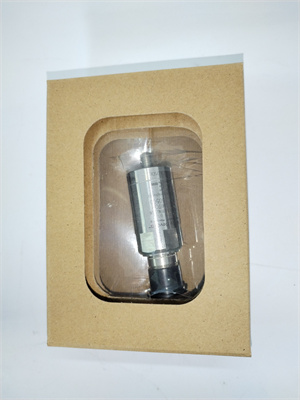
BENTLY 330500-02-CN
3. Product features and technical highlights
Accurate vibration velocity measurement: The 330500-02-CN, with its sensitivity of 100 mV/mm/s ±5%, provides precise measurement of vibration velocity. In a centrifugal pump application, even small changes in vibration velocity due to bearing wear can be accurately detected. For example, a slight increase in vibration velocity from 5 mm/s to 8 mm/s can be clearly captured, indicating the early stages of bearing degradation. This accuracy ensures that subtle changes in machinery condition are not missed, enabling timely maintenance.
Optimal frequency response: With a frequency response of 10 Hz to 1000 Hz, the sensor is well-suited to detect the vibration frequencies associated with common machinery issues. Low-frequency vibrations (10 Hz to 60 Hz) may indicate problems like foundation looseness, while higher frequencies (60 Hz to 1000 Hz) can signal bearing defects or gear mesh issues. In a motor-driven conveyor system, the sensor can detect both the low-frequency vibrations from a loose mounting bracket and the high-frequency vibrations from a worn bearing, providing comprehensive diagnostic information.
Robust environmental performance: The 316 stainless steel housing and IP65 environmental protection rating make the sensor highly resistant to corrosion, dust, and water. In a chemical processing plant, where exposure to corrosive gases and occasional water splashes is common, the sensor remains functional and accurate. Its ability to operate in temperatures from -40°C to +121°C also ensures reliable performance in outdoor equipment during winter or in high-temperature process areas.
Flexible installation options: The availability of magnetic base and stud mounting allows for easy installation on various machinery surfaces. The magnetic base enables quick and temporary installation for troubleshooting, while stud mounting provides a permanent and secure fixture for long-term monitoring. In a manufacturing facility, technicians can quickly attach the sensor to different motor housings using the magnetic base to check vibration levels during routine inspections, then permanently mount it on critical equipment using the stud method.
Seamless system integration: The sensor’s output signal is compatible with BENTLY NEVADA’s monitoring systems, as well as other standard data acquisition equipment. This compatibility allows for easy integration into existing machinery health monitoring networks. In a power plant, the 330500-02-CN can be connected to a BENTLY 3500 monitoring system, where the vibration data is analyzed alongside other parameters (such as temperature and pressure) to provide a comprehensive view of turbine health.
4. Typical application scenarios
Motor monitoring in manufacturing plants: In a large automotive manufacturing plant, numerous electric motors drive conveyor belts, robotic arms, and machining equipment. The 330500-02-CN is installed on these motor housings to monitor vibration velocity. If a motor’s bearing starts to wear, the vibration velocity increases. The sensor detects this change and sends the data to the plant’s monitoring system, which triggers an alert. Maintenance personnel can then replace the bearing during a scheduled downtime, preventing unexpected motor failure and production line stoppages.
Pump vibration monitoring in water treatment facilities: Water treatment plants rely on pumps to move water through various processing stages. The 330500-02-CN is used to monitor the vibration of these pumps. Over time, pump impellers can become unbalanced due to debris accumulation, leading to increased vibration. The sensor captures this vibration increase, allowing operators to clean or replace the impellers before the unbalance causes more severe damage, such as seal failure or shaft bending.
Turbine casing monitoring in power generation: In a gas-fired power plant, gas turbines operate at high speeds and under high loads. The 330500-02-CN is mounted on the turbine casing to monitor vibration velocity. Changes in vibration patterns can indicate issues like combustion instability or blade wear. By continuously monitoring these vibrations, plant operators can adjust turbine operation or schedule maintenance to ensure efficient and safe power generation.
5. Installation and maintenance guidelines
Installation: Before installation, review the sensor’s installation manual. Choose a suitable mounting location on the machinery casing, ensuring it is close to the bearing housing (where vibration is most pronounced) and free from excessive external noise. For temporary monitoring, use the magnetic base, ensuring a clean and flat surface for a secure attachment. For permanent installation, use the stud mounting, tightening the sensor to the recommended torque. Connect the sensor cable to the monitoring system, ensuring proper shielding and grounding to minimize electromagnetic interference. Route the cable away from moving parts and high-voltage lines to avoid damage and signal interference.
Maintenance: Regularly inspect the 330500-02-CN for physical damage, such as cracks in the housing or damage to the cable. Check the mounting to ensure it is secure, as loose mounting can affect measurement accuracy. Clean the sensor’s surface and mounting area periodically to remove dirt and debris that could interfere with vibration transmission. Calibrate the sensor annually using a calibration shaker to ensure measurement accuracy. If the sensor’s output signal is abnormal, check the cable connections and mounting first. If issues persist, contact BENTLY NEVADA’s technical support for assistance.
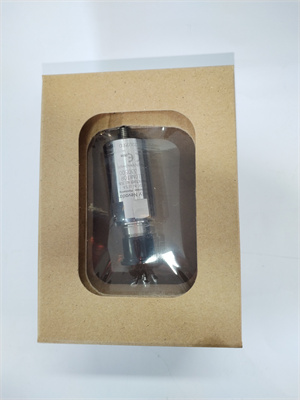
BENTLY 330500-02-CN
6. Service and support
BENTLY NEVADA offers comprehensive service and support for the 330500-02-CN velocity sensor. The product comes with a 12-month warranty covering defects in materials and workmanship. Their global technical support team is available 24/7 to assist with installation, troubleshooting, and calibration. Customers can access a range of online resources, including installation guides, calibration procedures, and technical specifications, through BENTLY NEVADA’s official website. In the event of sensor failure, BENTLY NEVADA maintains a stock of replacement sensors to ensure quick delivery and minimize downtime. Additionally, the company provides training programs to help customers understand proper installation, operation, and maintenance of the sensor, ensuring optimal performance in their machinery monitoring systems.

